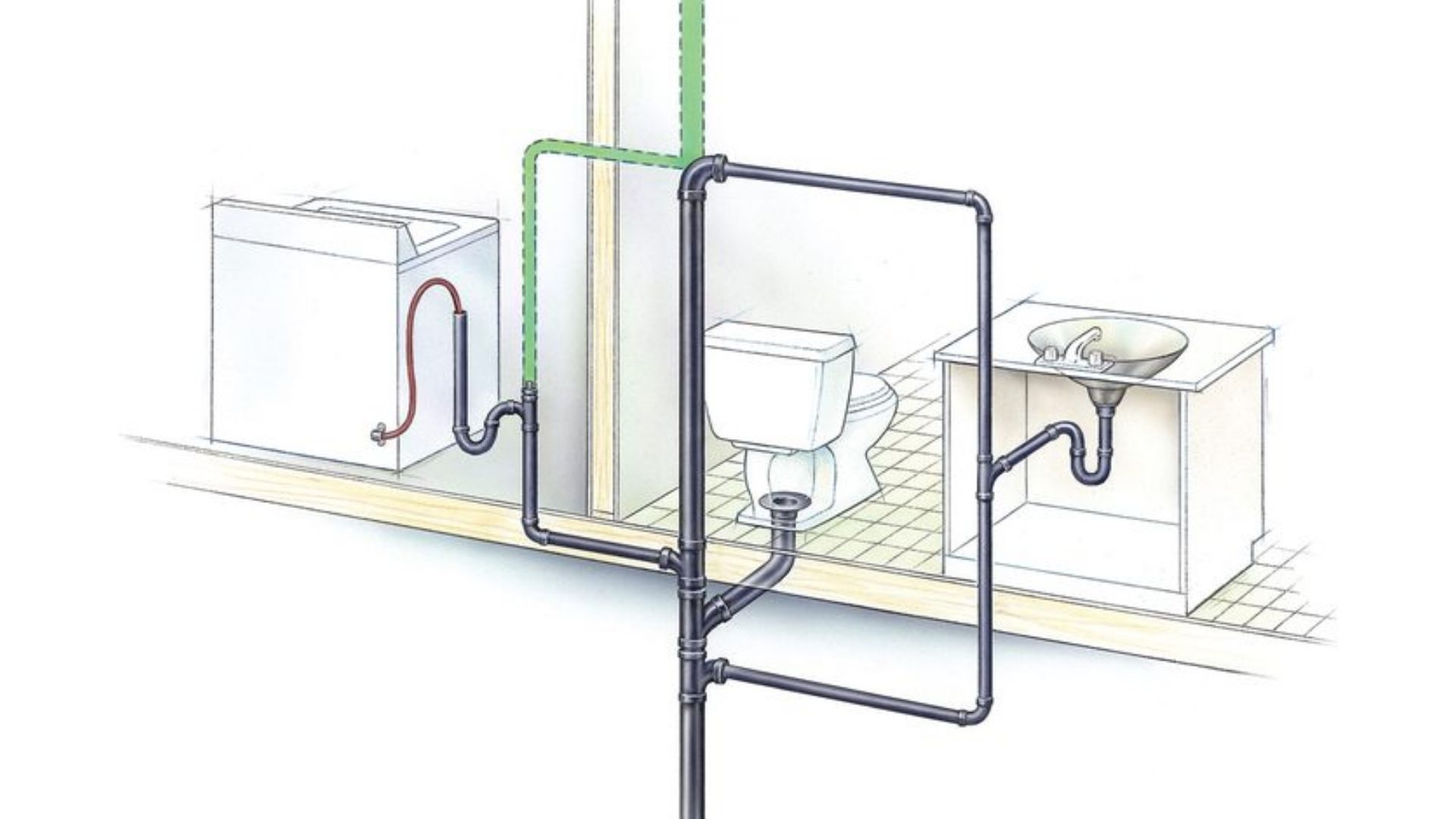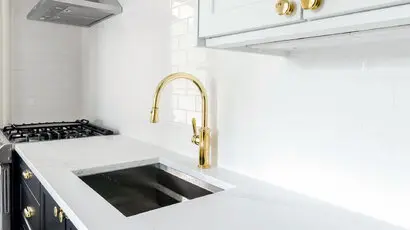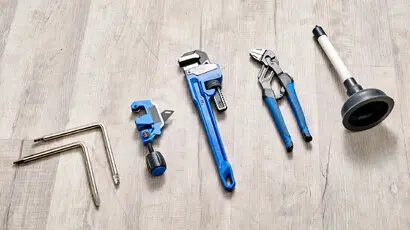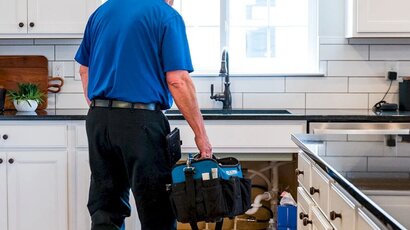Why Do I Need A Plumbing Vent
What is the purpose of a plumbing vent? A plumbing vent ensures the smooth running of the plumbing system. Keep reading to discover why plumbing vents are so important.
In most homes, water flows continually. Yet, a hidden hero ensures everything runs smoothly without disruptions.
This underappreciated element in the plumbing system is the plumbing vent. Realising the importance of this direct plumbing vent stack can be the difference between smooth operation and clogged pipes.
Apart from the plumbing system, a plumbing air vent significantly impacts the drainage system too. If you’re still not convinced, keep reading. We’ll explore the benefits, types, and common problems related to plumbing vents.
Let’s jump right into it, shall we?

Most people think of plumbing systems as the inlet and outlet pipes that carry water around the house. Drain pipes remove waste and dirty water from the sewage system. Meanwhile, supply lines draw water into the building for sinks, appliances, and other daily needs.
Alongside these essential piping arrangements, a plumbing vent pipe will regulate the air pressure in the entire system. Although it may seem out of place, it has one of the most vital roles. It creates vacuums to control the direction of air in both the drain and supply lines.
As a result, a plumbing vent system essentially uses air to pump water into the home while pushing waste material and dirty water out. Regardless of how clean and well-maintained other drain pipes are, they would not function without the plumbing vent pipe to move the water.
Plumbing vents play a crucial role in keeping sewer gases from entering your home. Without them, these unpleasant gases could gradually seep into your rooms.
These sewer gasses are unpleasant but can also be dangerous if inhaled. Potential poisoning and other ailments are highly likely in individuals exposed to such sewer gases without proper protection.
Due to this feature, plumbing vents are typically located on the roofs of houses and buildings. HVAC systems are also kept far away from these plumbing vents to prevent them from entering the home through another vent. Ultimately, limiting the frequency of contact with humans is the end goal of a plumbing ventilation system.
Plumbing ventilation systems come in various forms, each tailored for specific uses and setups. Let’s look at some different types of vents and where they’re commonly installed.

One of the most commonly found plumbing vents, an actual vent, is attached directly to the drain line. It regulates the flow of gasses in your home’s plumbing system. No water runs through these pipes, allowing them to vent the air onto the roof, leaving your bathroom with fresh air.
Usually, standard vents are used when two fixtures, like sinks, are in separate rooms and share a common wall. These vents are connected to a stack (known as vent stacks) with a sanitary cross to differentiate them from the other drain pipes in the plumbing system.
This vent serves as a passageway, connecting directly to the drain line or sitting behind fixtures like sinks and tubs. It links various fixtures to the main vent, helping to control gas build-up.
An essential type of plumbing vent, the AAV, acts as a buffer to stop gasses from moving into a room while wastewater is drained. When opened, this wastewater pipe can release a sudden influx of harmful sewage gas, which gravity stops due to the AAV. Typically, these vents are used for multiple plumbing fixtures around the home, such as the vent.
Identifying an issue with your plumbing vent pipe can help you determine the best action to get water flowing smoothly again. Although you can tackle plumbing and drainage pipes problems, a plumbing vent demands extra attention.
One of the best steps to take before proceeding is to figure out the source of the blockage. A gurgling sound in the drainage pipes is one way to watch a blocked vent. Other signs of a clogged plumbing vent include a backup of wastewater, little drainage in sinks or tubs, and an unpleasant odour from sewage gas.
If you feel the cause of your blockage is a blocked plumbing vent system, it is highly recommended to call professional help. When a backup is allowed to remain in the vertical pipe, there is a high chance of sediment build-up. This build-up can eventually damage the pipeline and cost a hefty sum to repair.
You are probably more aware of why plumbing vents are so important in any plumbing and drainage system.
Keeping your vents in good condition ensures your plumbing system runs smoothly. Nobody likes dealing with blocked drains and the headaches they bring. Plumbing vents help keep bad smells out of our homes, proving just how essential these pipes are.
No modern home can function properly without these plumbing air vents; they’re vital for our daily needs. That wraps up our guide on why these vents matter so much. If you need help with plumbing vents in Melbourne, get in touch! We’re your reliable plumbers from Docklands to Elwood.
Take care, and until next time!
A plumbing vent helps regulate air pressure within drainage systems. It allows fresh and clean air to enter the plumbing fixture and pipe network and eliminates any negative pressure that could trap harmful gases or hinder drains from flowing smoothly.
The plumbing vent works by equalising the air pressure within the plumbing drainage systems, allowing drains to flow smoothly and preventing water in traps from being siphoned off. Vents allow air to enter the system so water can drain properly.
A vent pipe can become clogged by debris, nests from animals/insects, or accumulation of grease or ice. This blocks the vent from bringing fresh air into the plumbing fixtures.
Signs of a clogged vent pipe include slow-draining sinks/tubs, gurgling sounds from drains, foul sewer gases coming from drains, reduced water flow, and toilets that bubble up or have a weak flush.
To unclog a vent pipe, you can try snaking the vent with a drain auger or plumber’s snake. However, vent pipes are often installed high up and may require a professional plumber to access and unclog them safely using special equipment. A plumber can also determine if the entire vent system needs repair.
Are you looking to hire a residential plumber in Melbourne? You must ensure you hire the right professionals. Follow our guide for tips on how to find a great plumber in your area.
Identify and prevent common plumbing issues in your house, and learn how to keep your pipes in the best condition. Enhance the plumbing in your home today!
Are you unsure when a plumbing problem turns into an emergency? Our blog explores the signs and solutions for plumbing emergencies. Get expert advice on dealing with unexpected plumbing issues.


